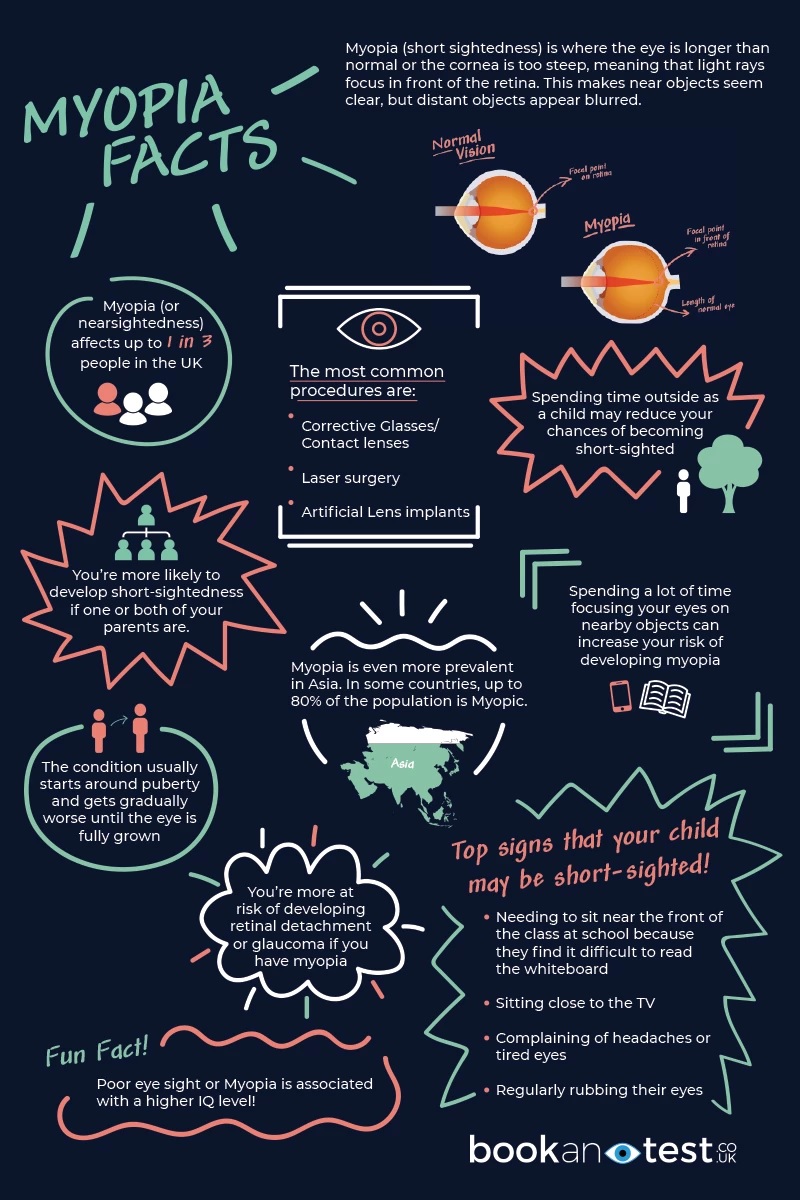Top 10 interesting facts about Myopia (short-sightedness)
Firstly, the definition of Myopia (short sightedness) is where the eye is longer than normal of the cornea is too steep, meaning that light rays focus in front of the retina. Near objects are clear, bust distinct objects appear blurred. For the most part, this is an inconvenience considering how frustrating it can be to be dependent on contact lenses or spectacles.

1. Myopia (or near-sightedness) affects up to 1 in 3 people in the UK and is becoming more common.
2. Short-sightedness is known to run in families, so you’re more likely to develop it if one or both of your parents are also short-sighted. Research has so far identified more than 40 genes linked to short-sightedness.
3. Spending a lot of time focusing on your eyes on nearby objects, such as reading, writing and possibly using hand-held devices for example: phones and tablets and large amounts of time spent on computers can also increase your risk of developing short-sightedness.
4. The condition usually starts around puberty and gets gradually worse until the eye is fully grown, but it can also develop in very young children.
5. Research has found that spending time playing outside as a child may reduce your chances of becoming short-sighted, and existing short-sightedness may progress less quickly.
6. Top signs that your child may be short-sighted can include:
- Needing to sit near the front of the class at school because they find it difficult to read the whiteboard.
- Sitting close to the TV
- Complaining of headaches or tired eyes
- Regularly rubbing their eyes
7. Eyes with a high degree of Myopia are at an increased risk of developing a serious condition like retinal detachment or glaucoma.
8. Myopia is even more prevalent in Asia. In some countries, up to 80% of the population is Myopic.
9. The most common procedures are:
- Corrective glasses/contact lenses
- Laser surgeries such as: photorefractive keratectomy, laser-assisted in situ keratomileusis and corneal rings
- Artificial lens implants
10. Poor eyesight or Myopia is associated with a higher IQ level!
Related articles




